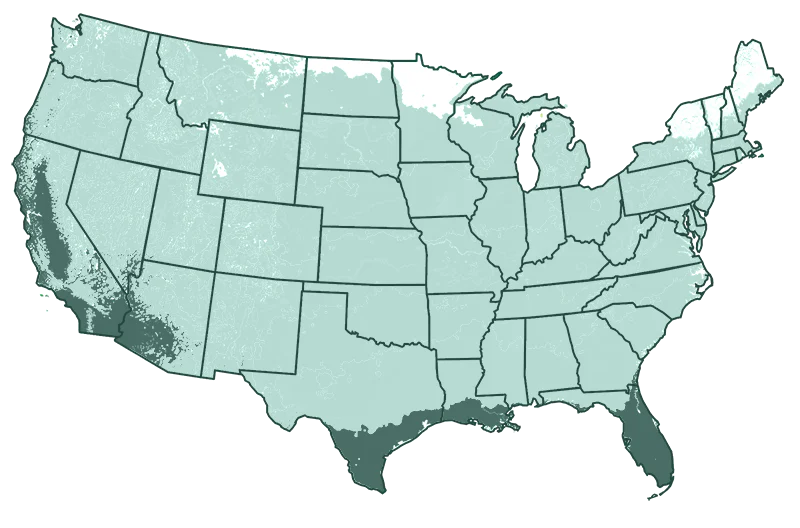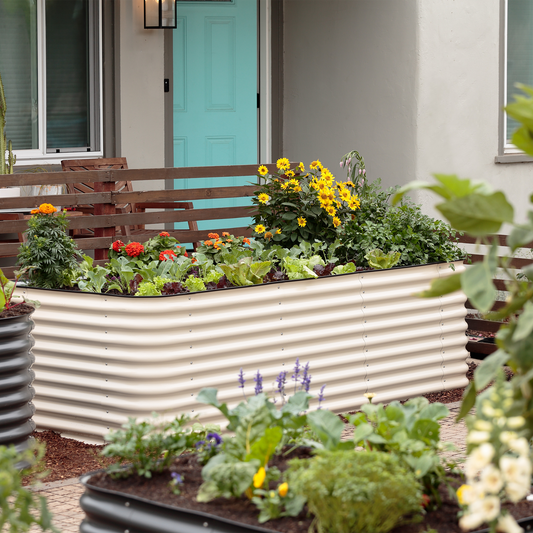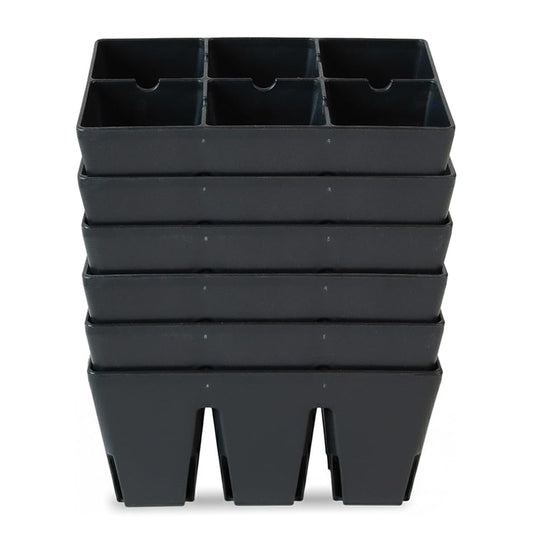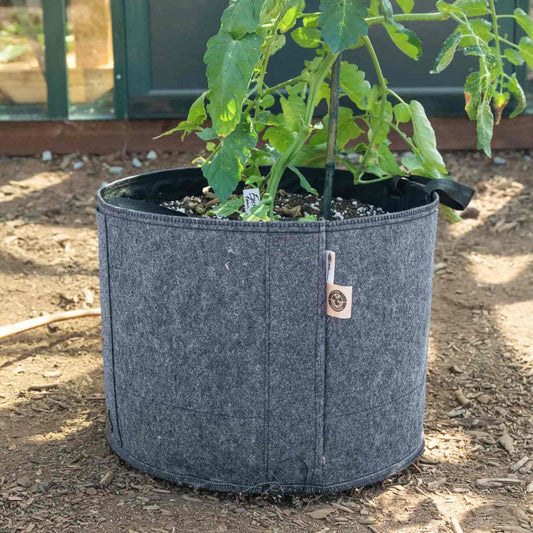

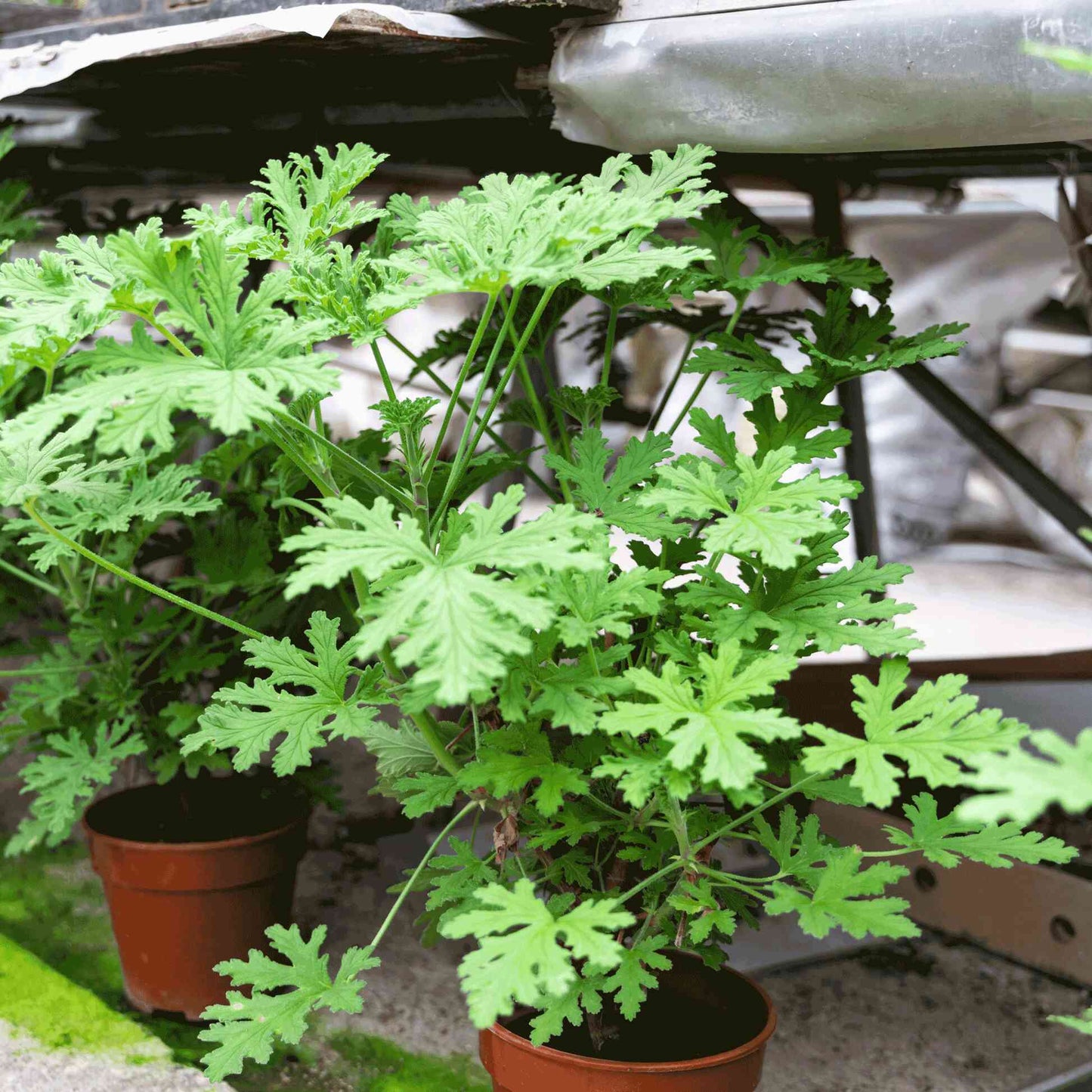
Citronella Bush
View More Planting Info
Citronella will grow well in full sun or partial shade in light, sandy, and well-draining soil. Space plants 1-2 feet from each other. Dig a hole twice as wide as the nursery bag. Remove the bag and loosen the roots carefully. Place the plant in the hole, making sure it will be at the same level as it was in the bag, and backfill to set it into the ground. Press down as you go to remove any air pockets. Water the plants well to get them settled, and then mulch around the base of the plants to conserve water and suppress weeds. To plant in pots, choose a pot that is 8-12 inches wide at the top and fill with a soil mix that is well-draining. Combine potting soil with a few handfuls of perlite, vermiculite, or rehydrated coco coir added for extra drainage. Fill the pot halfway, remove the plant from its bag, and tease out the roots. Place them in the pot and backfill them with more soil mix, planting at the same level as in the bag. Leave an inch of space at the top to add a layer of organic mulch. Water well and add a layer of mulch.
Harvesting:
Harvest leaves for potpourri and bug spray at any point during growth.
Pruning:
Prune for shape, pinching tips to make the plant bushier. Remove any dead stems, leaves, or flowers.
Growth:
Citronella grows 2-3 feet tall and 1-2 feet wide. Plant in containers or space 2 feet from other plants.
- Product Info
- Care and Maintenance
- Planting Care
- Growing Zone
Product Info
Mature Height: 2-3 ft.
Mature Width: 1-2 ft.
Sunlight: Full-Part Sun
Growth Rate: Fast
Does Not Ship To: AZ, OR
Care and Maintenance
Watering: Water citronella when the soil is dry once a week or less, depending on local rainfall. Do not overwater, which could lead to root rot. To establish plants, water more regularly for the first few months after planting. Potted plants can be watered when the soil is dry. Test by sticking a figure into the soil. If it's dry, it needs water. Ensure the water drains through the drainage holes, and don’t allow pots to sit in water trays.
Fertilizing: Use a balanced fertilizer monthly on your citronella plants to keep the leaves vibrant and the plants producing flowers. For potted plants, feed monthly with a liquid fertilizer when watering.
Pruning: Prune to keep its shape, pinching out the growing tips to make the plant bushier, and remove any dead stems, leaves, or flowers.
Pests and Diseases: Inspect regularly for common pests like scale, white flies, red spider mites, and aphids. Treat with horticultural oil or insecticidal soap and ensure plenty of air circulation around the plants. Waterlogged soil could cause root rot and other fungal diseases. Make sure the soil is well draining and dries out between waterings.
Pollination: Pollination will only be required for seed production, and bees and butterflies will do the job.
Harvesting: Leaves can be harvested and dried for use in potpourri. This is not an edible Pelargonium species so it should not be consumed.
Recovery Time: Transitioning from our nursery to your home can be a bit of a shock to your plant. A short acclimation period helps it recover and reduces stress.
Climate Adjustment: Every environment is unique. Giving your plant time to adjust to the local climate, humidity, and light conditions in a shady spot will set it up for better growth and health.
How to Acclimate Your Plant: Keep the plant in its container and place it in a shady, sheltered area away from high winds. Ensure it's watered adequately – the soil should be moist but not waterlogged. Monitor the plant for signs of distress and allow it to adjust for a few days before planting. After a few days of acclimation, your plant will be better prepared to thrive in its new home for years to come.
Planting Care
Sunlight: Plant in full sun to partial shade. They prefer at least 6 hours of sunlight per day.
Soil: Plant in any well-draining soil with an acidic pH between 5.8 and 6.3. In containers, use good potting soil with added drainage materials.
Mature size: This plant has a mature size of 2-3 feet in height with a width of 1-2 feet.
Climate: Citronella needs a warm climate or protection from extreme cold in winter. They are frost-sensitive.
Thinning: There is no need to thin these plants unless there is an issue with air circulation.
Location: Plant in a sunny or partially sunny position in well-draining soil.
Watering: Allow the soil to dry out between watering. Check your plants once a week and water them if necessary. Brown or yellowing leaves are a sign that they may need more water.
Pruning: Prune only to remove any diseased or dying growth, deadhead flowers, and keep their shape.
Spacing: Plant 1 to 2 feet away from other plants or nearby structures in your garden.
Pollination: There is no need for these plants to pollinate for leafy growth.
Hardiness Zone: The Citronella Bush is suitable for planting in USDA zones 9-11 in the garden or in zones 4-11 on patios and decks protected from harsh and cold weather.
Fertilizer: To encourage healthy leaf growth, feed citronella in the garden with a balanced slow-release fertilizer once a month and feed potted plants with liquid plant food once a month.
Growing Zone
Grows Well In Zones: 4-11 patio / 9-11 outdoors
